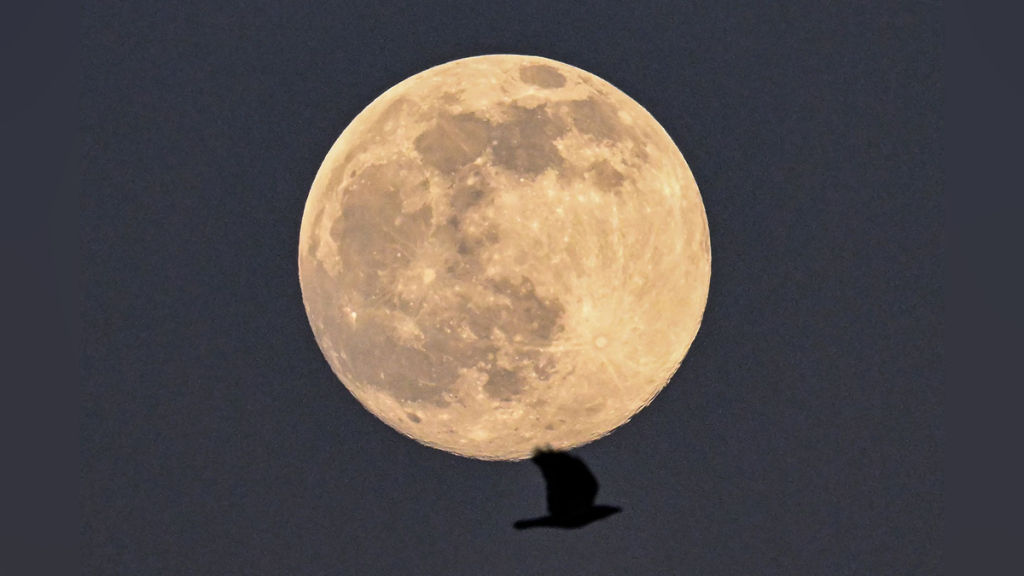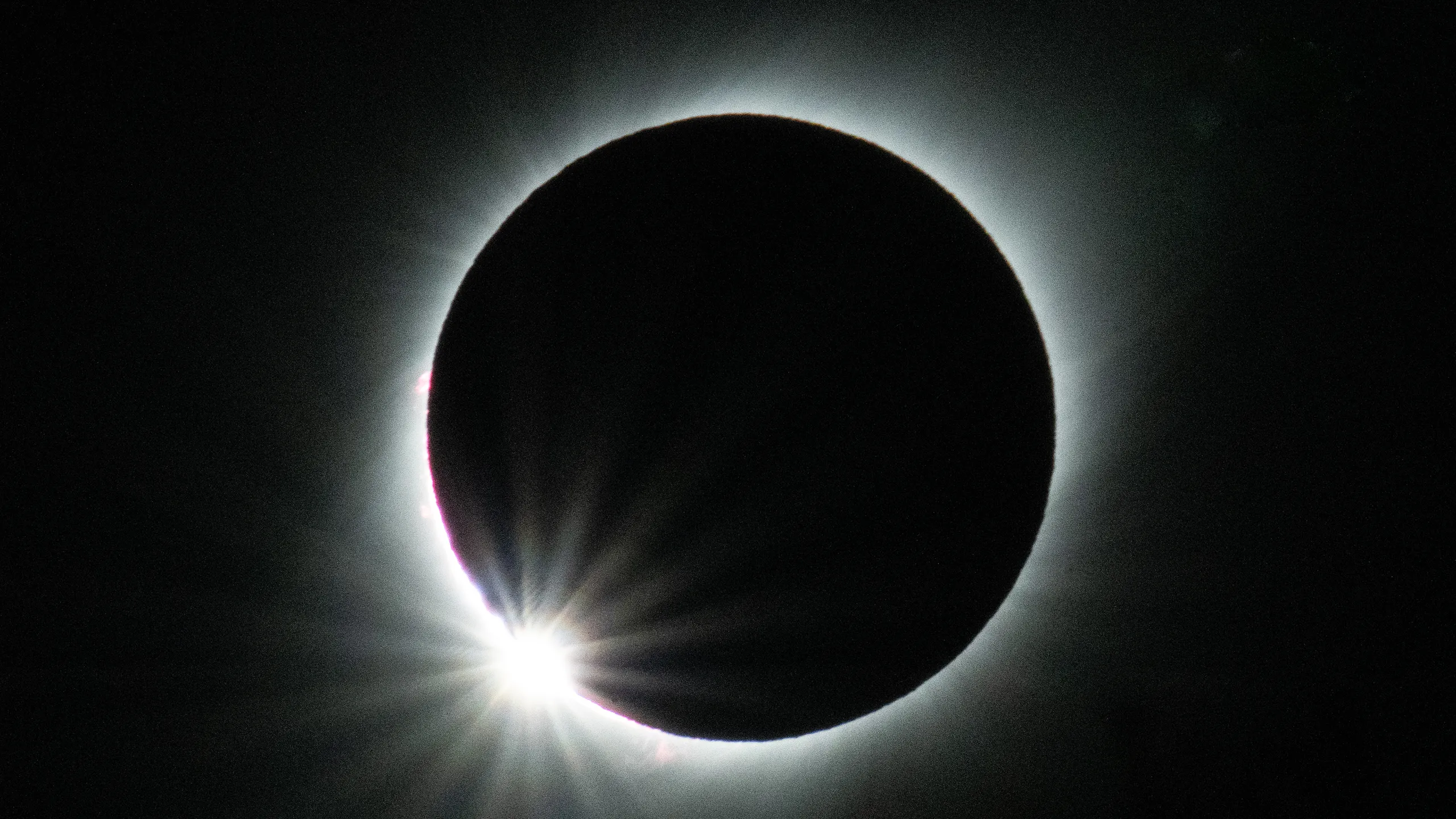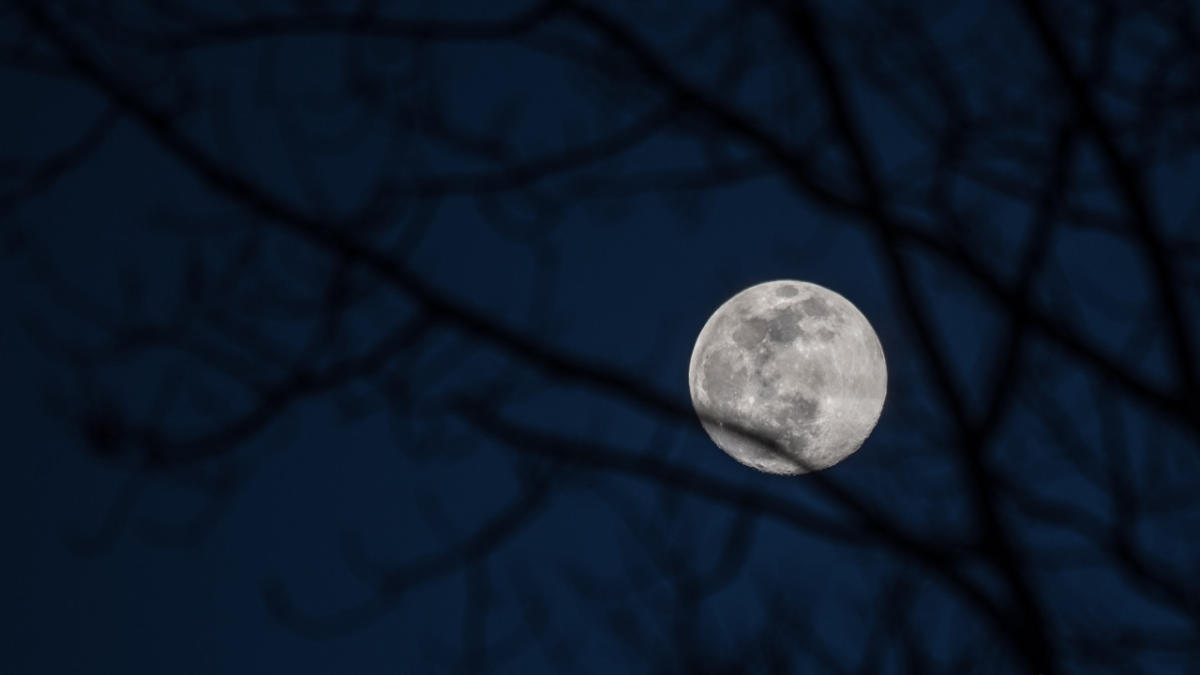A radiant spectacle awaits skygazers on Monday as the glowing Worm Moon graces the celestial canvas, accompanied by a subtle celestial event—the penumbral lunar eclipse.
March’s full moon, fondly dubbed the Worm Moon by the Farmers’ Almanac owing to its proximity to the spring equinox, will reach its fullest illumination at 3 a.m. ET.
A few hours prior, commencing at 12:53 a.m. ET, as per EarthSky, the moon will align almost perfectly with the sun and Earth, causing Earth’s penumbral shadow, the outer edge, to cast over the luminous sphere.
The peak of this eclipse, at 3:12 a.m. ET, will manifest as a slight dimming of the moon, notes Dr. Shannon Schmoll, director of the Abrams Planetarium at Michigan State University.

Glowing Worm Moon Illuminates Skies Alongside Penumbral Lunar Eclipse (Credits: WHDH)
“It’ll be almost a gradient of darkening happening from one side of the moon to the other. It’s not going to be a super dramatic change in what we see in the moon,” Schmoll explained. “But if you’re sitting there watching it, you might notice some slight variations in brightness.”
Named by Native American tribes in homage to the emergence of beetle larvae and other springtime creatures from hibernation, the Worm Moon will grace the skies globally, appearing full for a couple of days.
However, the penumbral eclipse will be visible only to those on the night side of Earth during the event, spanning Europe, North and East Asia, Australia, Africa, North America, and South America. According to EarthSky, the lunar eclipse will conclude at 5:33 a.m. ET.
This penumbral eclipse precedes a total solar eclipse slated to traverse Mexico, the United States, and Canada on April 8. Such lunar and solar eclipse pairings are recurrent due to the alignment of the sun, Earth, and moon.
While the full moon is ensnared in Earth’s shadow during this penumbral eclipse, the moon’s forthcoming new moon phase will pave the way for a solar eclipse, where the moon, positioned between the sun and Earth, obscures the solar disc.

Glowing Worm Moon Illuminates Skies Alongside Penumbral Lunar Eclipse (Credits: Allure)
Eclipse Season
An “eclipse season” recurs roughly every six months, lasting about 35 days, near the equinoxes, coinciding with the near-perfect alignment requisite for eclipses, according to NASA.
Lunar eclipses don’t transpire monthly during each full moon due to the moon’s orbital tilt of about 5 degrees, Schmoll elucidated. Unlike the dramatic spectacle of a total lunar eclipse, with the moon donning an eerie red hue, a penumbral eclipse necessitates no specialized equipment for viewing, as with solar eclipses, making it observable with the naked eye.
“You pretty much just need to be outside with a clear view of the moon when it’s happening,” Schmoll remarked. “(Eclipses are) always a good excuse to go outside and try to look at the sky and appreciate where we are in the universe, and what we are able to observe from our planet.”
Solar and Lunar Eclipses
The most anticipated among the four eclipse events in 2024 is the total solar eclipse on April 8. Subsequently, an annular solar eclipse will grace parts of South America on October 2. Resembling a total solar eclipse, an annular eclipse occurs when the moon, at its farthest point from Earth in its orbit, cannot fully obscure the sun, resulting in a “ring of fire” in the sky.
A partial lunar eclipse, where Earth intervenes between the sun and the full moon without perfect alignment, will manifest over Europe, much of Asia, Africa, North America, and South America between September 17 and 18.
























